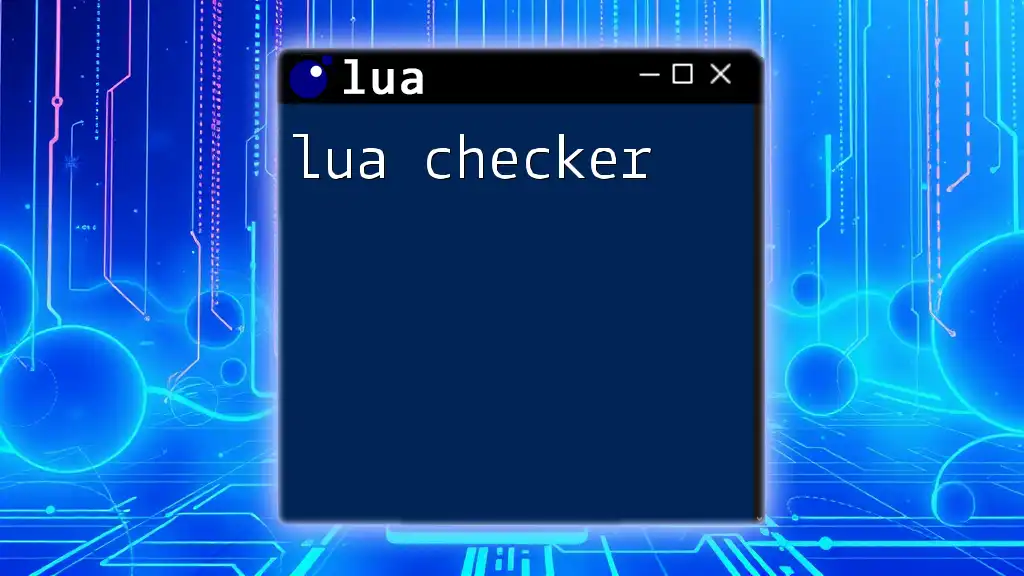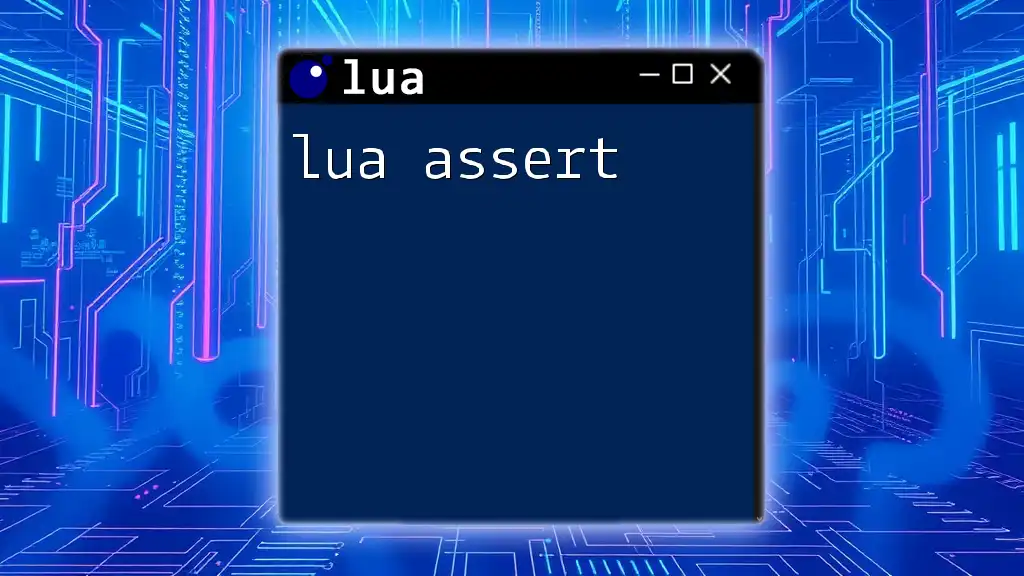A Lua cheat sheet is a quick reference guide that provides essential Lua syntax and commands, making it easier for beginners and experienced programmers alike to write and understand Lua code efficiently.
-- Example of a simple Lua function
function greet(name)
return "Hello, " .. name .. "!"
end
print(greet("World")) -- Output: Hello, World!
Understanding Lua Syntax
Basic Structure
Lua's syntax is designed with simplicity in mind, making it easy to read and write. A basic Lua program often consists of function calls, variable declarations, and control structures. For instance, printing a simple message can be done as follows:
print("Hello, World!")
This core functionality is key for beginners to grasp as it lays the groundwork for more complex programming tasks.
Comments
Using comments in your code is crucial for clarity and maintenance. They help explain the purpose of the code and are often used for documentation.
Lua supports both single-line and multi-line comments:
-- This is a single-line comment
--[[
This is a
multi-line comment
]]
Including comments within your Lua scripts can save you or others time when revisiting the code later.

Data Types in Lua
Fundamental Data Types
Lua features several primitive data types, which are the building blocks for more complex data structures. The primary types include:
- Nil: Represents a lack of value.
- Boolean: Can be either `true` or `false`.
- Number: Refers to numeric values, which can be integers or floating-point numbers.
- String: A sequence of characters.
- Function: A block of reusable code.
- Table: A versatile structure that can hold an array or a dictionary.
- User Data: Allows storing arbitrary C data.
- Thread: Used for multi-threading.
For instance:
local a = nil -- Nil type
local b = true -- Boolean
local c = 10 -- Number
local d = "Lua" -- String
Tables: The Heart of Lua
Tables are arguably the most powerful and versatile data structure in Lua. They can function as both arrays and dictionaries, allowing for dynamic storage of data.
Example of creating and accessing tables:
local fruits = { "apple", "banana", "cherry" }
local person = { name = "John", age = 30 }
print(person.name) -- Outputs: John
Understanding tables is crucial for effective programming in Lua, as they are widely used in various applications.

Variables and Scoping
Declaring Variables
Lua allows for both local and global variables. Local variables are only accessible within the block or function they are defined in, whereas global variables can be accessed from anywhere in the code.
Here's how to declare them:
local x = 5 -- Local variable
y = 10 -- Global variable
Keeping variables local whenever possible is a good practice as it avoids unintended side effects.
Scope of Variables
Understanding variable scope in Lua is vital for managing your code's behavior. Variables can have block, function, or global scope.
Example showcasing scope:
function scopeTest()
local inside = "I'm inside"
print(inside) -- Valid
end
scopeTest() -- Outputs: I'm inside
print(inside) -- Error: 'inside' is not defined
This demonstrates that a local variable only exists within its defined block or function.

Control Structures
Conditionals
Conditionals are essential for making decisions in your code. The `if-else` statement evaluates conditions and executes code accordingly.
Here's a simple example:
if x > 10 then
print("x is greater than 10")
elseif x < 10 then
print("x is less than 10")
else
print("x is equal to 10")
end
A solid grasp of conditions will enable you to control the flow of your Lua programs effectively.
Loops
For Loop
The `for` loop is an excellent tool for iterating over a sequence of numbers. The syntax is straightforward:
for i = 1, 5 do
print(i)
end
In this snippet, `i` will take on values from 1 to 5, printing each number to the console.
While Loop
The `while` loop continues execution as long as a specified condition is true.
Example of a while loop:
local count = 0
while count < 5 do
print(count)
count = count + 1
end
This loop will print numbers from 0 to 4. Mastering loops will greatly enhance your programming skills in Lua.

Functions in Lua
Defining Functions
Functions encapsulate code that can be reused. They are defined using the `function` keyword.
Here's a simple function definition:
function greet(name)
return "Hello, " .. name
end
print(greet("World")) -- Outputs: Hello, World
Functions facilitate code organization, making it more manageable and easier to understand.
Function Arguments
Lua allows functions to accept parameters that can be optional or have default values.
Consider this example:
function add(a, b)
return a + (b or 0) -- b defaults to 0 if not provided
end
print(add(10)) -- Outputs: 10
print(add(10, 5)) -- Outputs: 15
This demonstrates how flexible functions can be, meeting your programming needs effectively.

Error Handling
Basic Error Handling with pcall
Error handling is crucial for robust programming. The `pcall` (protected call) function allows you to execute a function and catch any errors without crashing your script.
Example of using `pcall`:
local success, err = pcall(function() error("An error occurred") end)
if not success then
print("Error: " .. err)
end
This code prevents abrupt termination of your program due to errors, providing a smoother user experience.

Metatables and Operators
Understanding Metatables
Metatables give you the ability to change the behavior of tables. By setting a metatable for a table, you can define how certain operations behave (like addition or indexing).
Here's a brief example:
local myTable = {}
local mt = {
__index = function(t, key) return "default" end
}
setmetatable(myTable, mt)
print(myTable.nonexistent) -- Outputs "default"
This feature allows for advanced programming techniques that can lead to powerful abstractions.
Common Operators
Lua includes several operators for arithmetic, comparison, and logical operations. Familiarity with these operators is essential for effective coding.
Here are some examples:
local sum = 5 + 3 -- Arithmetic
local isEqual = (5 == 5) -- Comparison: true
local logicalAnd = (true and false) -- Logical: false
Understanding these will make manipulating data in Lua much more effective.

Conclusion
In summary, this lua cheat sheet provides a concise yet comprehensive reference for key commands and concepts in Lua. Mastering these essentials will set a solid foundation for your programming journey. Practice using this cheat sheet as you write Lua scripts, and feel free to explore additional resources as your proficiency grows. Remember, learning is an ongoing process, and every bit of coding brings you closer to mastery.

















